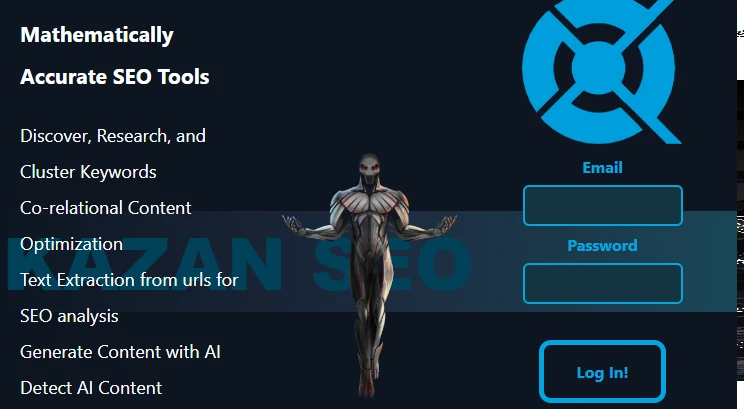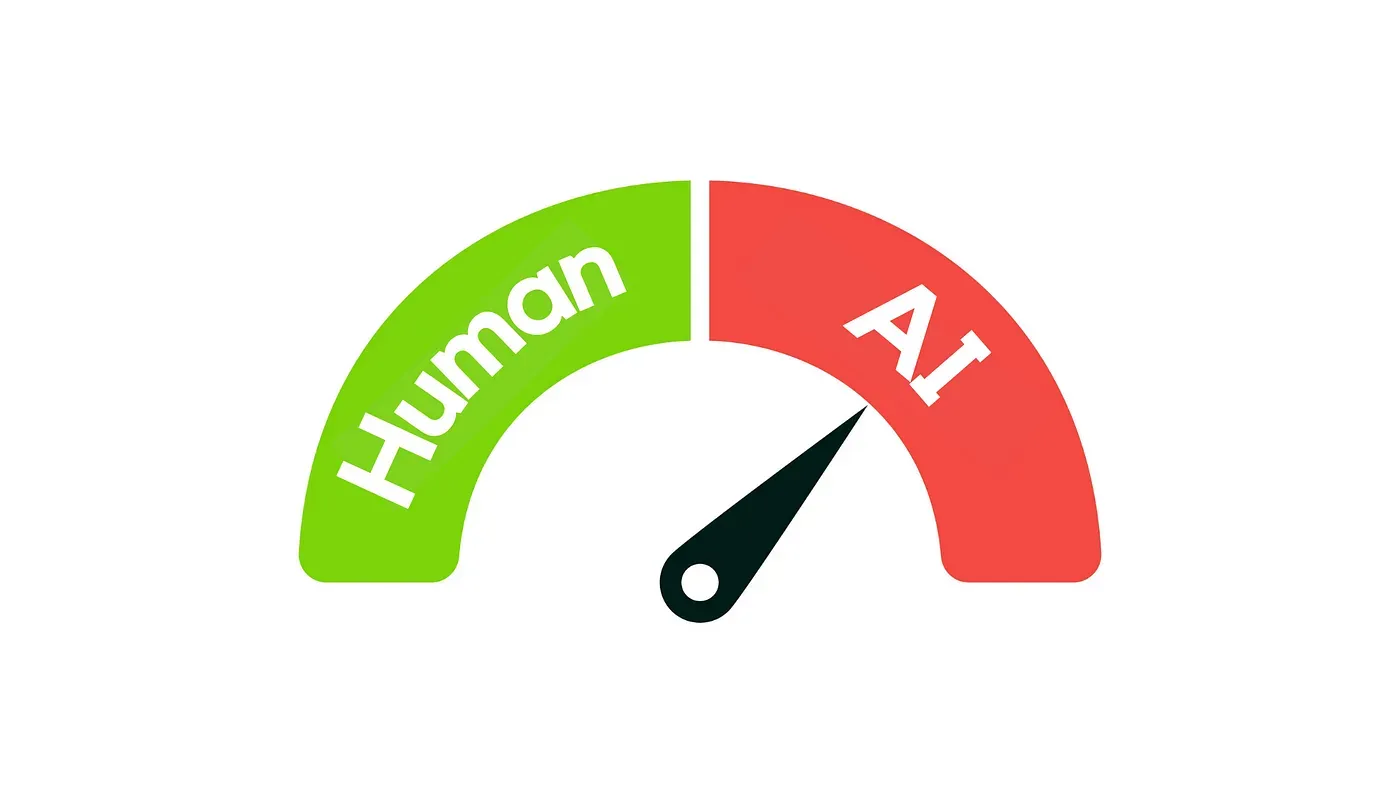
With the internet gone ballistic after the launch of Openai’s ChatGPT, content writers are increasingly pitching their tents with a number of AI tools to meet their ever-growing content needs.
But there’s a much bigger issue here, making marketing copies or SEO blog posts with these AI tools poses a lot of threats.
Google has stated very clearly in their recent press releases that they don’t have issues with AI contents and that the search engine is keenly interested more in quality content.
But here’s the argument…
How can AI-generated contents pass as quality contents?
A few bloggers in my network have had their websites deindexed recently by Google and Bing due to largely written AI copies.
Hence the need to check the excesses, especially when it was crystal clear that machine-generated copies may not pass Google’s quality test for search ranking.
To further avoid these type of damages in the future working with writers, many web Masters, bloggers and digital marketers are increasingly turning to AI detection tools to uncover any foul play by their copywriters.
AI has gone mainstream and it’s s creeping to almost all the areas of our tech life, while that may sound good on one hand, on the other, there are consequences for using Ai in some kinds of ways.
AI writing tools like ChatGPT and others are said to lack human-like reasoning capabilities and cognition and so, they can’t make great ideas around professional subjects.
Another talk point about using Ai writing tools is the inability of these AI tools to use emotions to properly carry the readers along and further engage them in the subject.
In the wake of this, most digital marketers and SEO specialists are frowning on out rightly against the use of Ai for generating SEO and marketing related contents, they feel such contents lacks the merit to attract the much desired conversion and satisfy search engine quality requirements.
—
But the question is…
How do you detect a copy is AI-generated?
Trying to answer this, There are quite a handful of AI text detection tools also powered by AI that can help to detect if a piece of text is human written or AI-generated.
Most of these AI text detectors are accurate to a good extent but not 100% fool-proof.
Some of these tools can even point instances of AI content by paragraph in a particular content piece.
Writers, bloggers, and SEO handlers use ai text detector tools like the ones listed on this page to combat the use of AI in creating SEO copies.
Best AI Content detection tools
Here is a round up of the most efficient AI content detection tools suitable for uncovering AI-generated texts.
Below is a list of the best AI-content detector tools;
1. Originality.ai
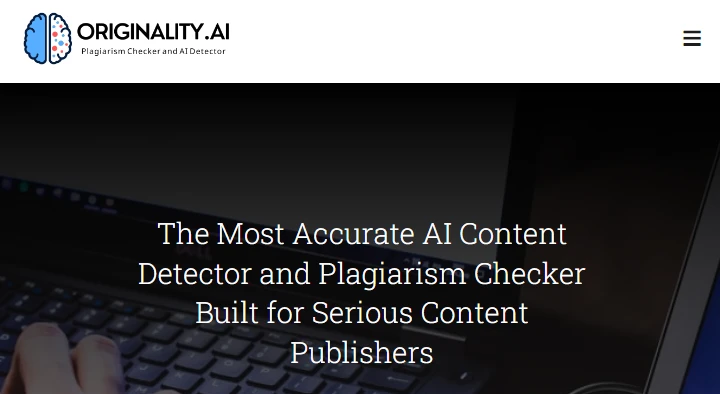
Originality ai was shortly launched after Openai’s ChatGPT in December 2022. Originality ai prides itself as being the first ai-content detector trained to efficiently predict if a text based content has be generated using ai-powered tools such as ChatGPT, Rytr of any of the major AI-writing tools that runs on models such as the GPT-2, GPT-3, GPT-NEO, GPT 3.5, GPT-J and more.
The founder of Originality AI, Jonathan Gillham pointed that it’s amazing how “Ai is working for our benefit to detect other AI-generated content”.
After Google clarifies that AI-generated content with no extra value violates the company’s policy, there’s a need for content publishers to checkmate that their content is not ai-written to avoid any severe consequences to their business or online presence, this is the exact idea that birthed originality AI.
But as we earlier hinted, it’s not looking like the tool is 100 percent fool proof and the internet is still littered with so many guides to bypass ai-detection.
However, we can see a lot of improvement with this tool, some AI tools that has no detection has their main marketing USP are gradually been caught up in originality AI.
Originality AI so far is the most sophisticated AI-generated content detector, it has a versatile dashboard and powerful algorithm to help detect AI-generated copies. Some of its amazing features are:
- Complete Website/webpage scans
- Supports all NLP models
- APIs Integration
- 94% accuracy
- Chrome extension for easier workflow
However, the tool is not free to use, it runs on a credit-based system where you need to purchase credit on the platform.
To check about 300 words on Originality AI you’d need about ₦0.003 for that. For just ₦20 you can get about 2000 credits to run your detection tasks.
2. OpenAI Output Detector (Hugging Face)
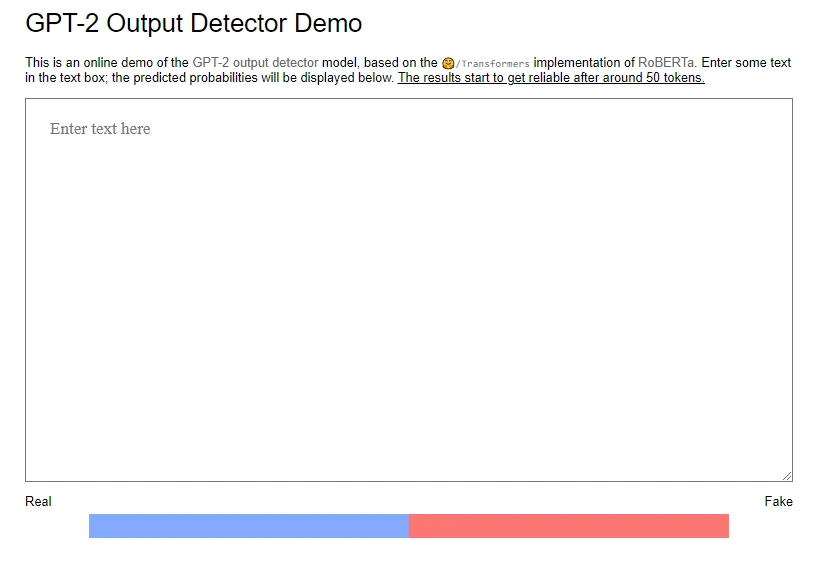
The first free AI detector was launched by the team at Hugging Face, Inc, an American artificial intelligence company that builds NLP transformers library and other machine learning models and datasets.
The Hugging Face Output detector became popular not so long after ChatGPT came about, then there are not many free ai-text detectors, this used to be the only one and it came a lot earlier than Originality AI.
At some point the tool becomes unavailable for days due to the number of AI detection request processed on the website per day. We thought it finally disappeared until a fresh version of the tool was reintroduced.
Let’s talk about some of the capabilities of the tools, it has a straightforward Real or Fake percentage color grading system, it is designed to detect largely GPT2 NLP output powered by RoBERTa based detector, it’s free to use, open source and has a clutter free interface. It does a pretty great job detecting the latest ChatGPT-based content generation, but it’s capabilities are limited.
3. Winston AI
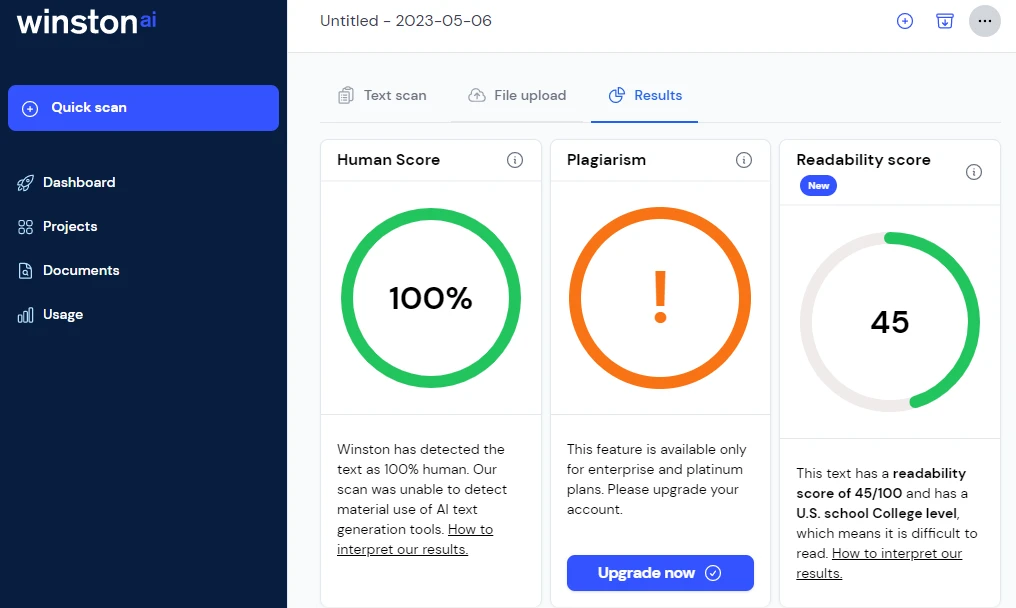
I stumbled on this next tool at the point of doing research for this post. Winston AI is a recent entrant into the AI-content detection space. with this tools there are two ways it tries to assess Ai detection in your copies. It uses a sentence-by-sentence prediction algorithm and an overall score.
To use the tool, you need to first create a new project so that you files are neatly arranged in the dashboard, next you can paste your text or upload your document to the tool’s scan text interface, you can either choose to check for plagiarism or Ai detection.
The detector tool loads pretty fast and on the result interface you can see a human score grading from 0 to 100%, a score tending to 100 percent is shown in green to depict human written, then plagiarism score was on the middle section but available for paid users, the last column has the readability score showing how easy or difficult the text is to read.
Overall, we like what we see with the tool, starting from the modern landing page, to the super clean clean dashboard.
They have a free trial and there are no credit card required, you can quickly signup with Google account to unlock access to your 7 day trial, you’d get up to 2,000 word scan on the free trial, and if you’re cool with the tool you can jump on their growth plan for ₦14, where you get up to 80,000 Word Scan with advanced AI detection capabilities, downloadable reports, efficient support and more.
4. GLTR.io
GLTR is a free AI text detection tool with the funny catchphrase “Catching a Unicorn”. The tool was a result of a collaborative effort between MIT-IBM Watson AI lab and Harvard NLP.
It is a visual footprint inspection tool designed to detected automated text generated with GPT2 NLP model of open AI.
GLTR has a high accuracy rate in detecting GPT2-generated text and it uses a fronensic-analysis approach to show the AI footprints in the text.
The tool also delivers pretty accurately for scanning scientific abstracts and GRE texts with complex words for AI-generated content.
The interpretation are not straightforward (of course you can’t expect so much for a tool that has been built since 2019) and the dashboard is also a little bit complex to navigate.
There is also a clear disclaimer on thee tool’s page that “This version of GLTR was made in 2019 to test against GPT-2 text. It might not be helpful to detect texts for recent models (ChatGPT).”
LINK
5. Writer

Writer is a generative AI platform with plenty of use cases for enterprises and agencies to create catchy content across their teams.
Write is majorly on a mission to help small businesses “Automate what’s automatable in content”.
One of its nifty Ai tool is the AI text detector that helps users discover traces of AI-text generation in contents.
The tool has a lot modern interface compared to some of the tools on this list and it integrates well with a plethora of third-party platforms, including Chrome, Figma, and Contentful.
The free version of this AI detector is limited to 1500 characters and it can detect ai footprints on a web page or by pasting the text directly into the tool.
Writer’s AI detection tool is not as accurate as expected and could be better.
6. Kazan SEO
Kazan SEO which used to be a content optimization platform offering varying SEO tools content optimization, SERP overlap, text extraction, and keyword clustering tools has recently added Ai detection to the list of their services.
Kazan SEO is trained on GPT-3 and uses the fake and real identification grading system.
Real is denoted with the blue bar while fake is denoted with the red bar, you can also see a percentage of real or fake in the scanned text.
The tool has has an accompanying chrome extension that allows you to directly highlight contents from any web page and and analyze for Ai-generation.
Kazan is basically a suite of SEO tools trying to create a convenient content optimization platform, it has an easy to use personal area.
To use the tool, you need to first signup on the website, then create a project.
Then you can click on the menu to pick from the list of tools namely; Content optimizer, text extractor, SERP overlap, bulk KW clustering, KW sharing, AI GPT-X detector and more.
The tool is absolutely free to use, scanning text is fast and the AI text detection delivers pretty accurately to a great extent, however, using the chrome extension with the website can sometimes be buggy, the chrome extension pointed that there is a premium version that allows access to more features, but nothing of such is stated anywhere on the website, probably, there is a plan in the works to unlock a premium package, but for now the tool is free to use, however, the tools are under a protected access and you need to signup on the web app to use them.
7. Crossplag
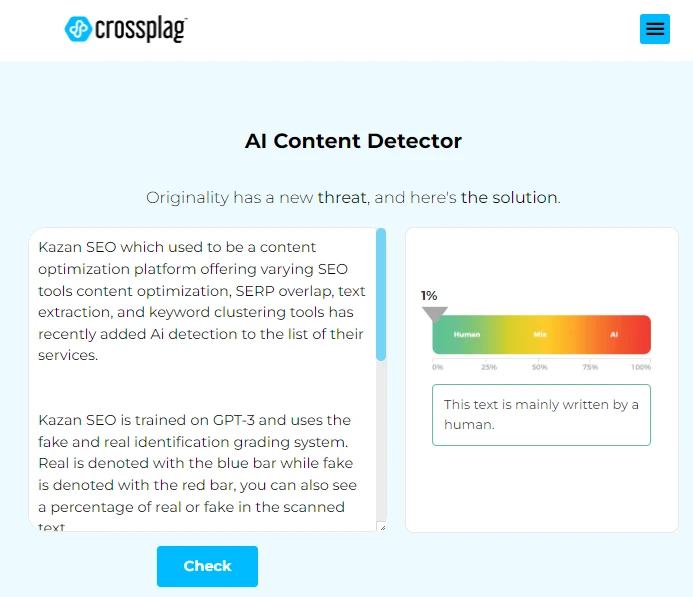
Next on the list is Crossplag AI text detection tool. The foreword on their website “Originality has a new threat…”sounds like they’ve got a lot up their sleeves to match up with the best AI text detection tool in the market.
However, the nicely built and simple landing page meets the eyes, the tool runs on a freemium model meaning there’s a free plan that allows you to analyze up to 1000 words for Ai-generated patterns and plagiarism, signup is free and there’s no credit card required to use the free trial.
The tool is pretrained with a vast data set of machine learning algorithms and natural language processing to detect AI-generated text and show the percentage of possible AI content in the text using a a severity scale of green (tends to 100% human-written) to red (tends to 100% Ai-written)
The tool is reasonably accurate with its analysis for GPT-3.5 and older iterations and it also provides integrity insights currently supports English language only.
8. Copyleaks
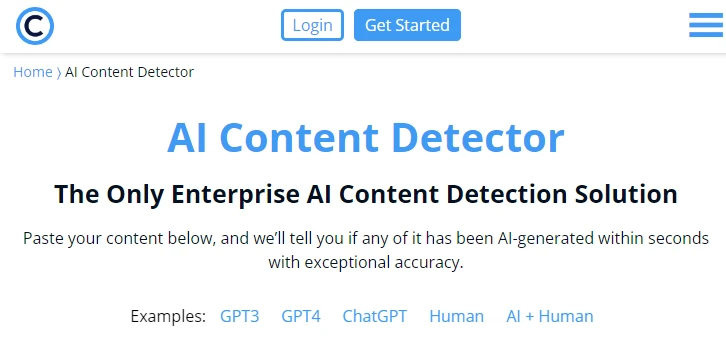
Copyleaks is a three-in-one content analysis tools that can detect both plagiarized and an AI-generated texts.
According to the foreword on the website they on a mission to empower “Originality
and Inspiring Authenticity”.
It has capabilities to detect and differentiate human written text from AI-generated texts, it can detect up to the latest GPT 3.5 and latest ChatGPT3.
Using its API you can integrate the tool with your LMS software. It runs on the NLP model with an exceptional accuracy of over 92%.
We tried the tool for free and the result turned out accurate, however, there’s no grading system like its the case for some other tools on this page, So it’s hard to tell how much of AI content is in the piece.
We also tested the plagiarism detector which turned out great.
Copyleaks has also taken things further with its unique codeleaks plagiarism checker which uses AI to detect multiple code languages (including JAVA, Python, C++) to find code plagiarisms.
9. Content At Scale
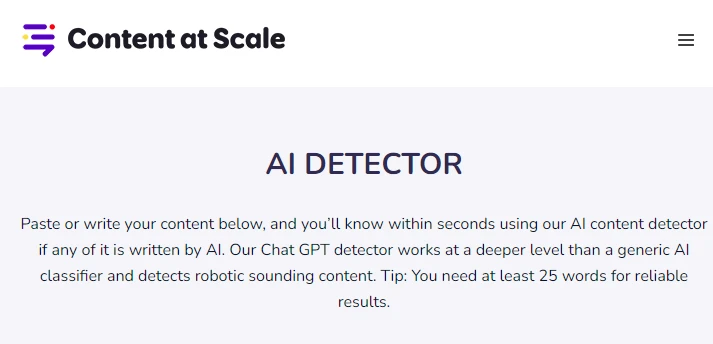
Content At Scale is one free a ai detector web app that I personally love to use.
We’re are somewhat pleased with the simple, clean and modern interface of the web app, it loads quite fast and the results turns out to be near perfect when it comes to accuracy.
The AI detection prowess of this tool is sharp, it also highlights the possible statement or sentence that is likely to be AI generated.
The results of the AI analysis are projected using 3 parameters; predictability from a scale of 0 to 100, ai probability also on a scale of 0 to 100 and pattern on a scale of 0 to 100.
The main content platform prides itself as one that uses a combination of 3 AI engines plus NLP language model with semantic algorithm and more to produce fool-proof SEO-ranking-ready contents.
It’s difficult to make a remark on the their above claim since we’re yet to try the main platform.
However the AI detector tool delivers well, it’s free to use, you can analyze Up to 2500 characters or about 400 words.
10. Sapling.ai
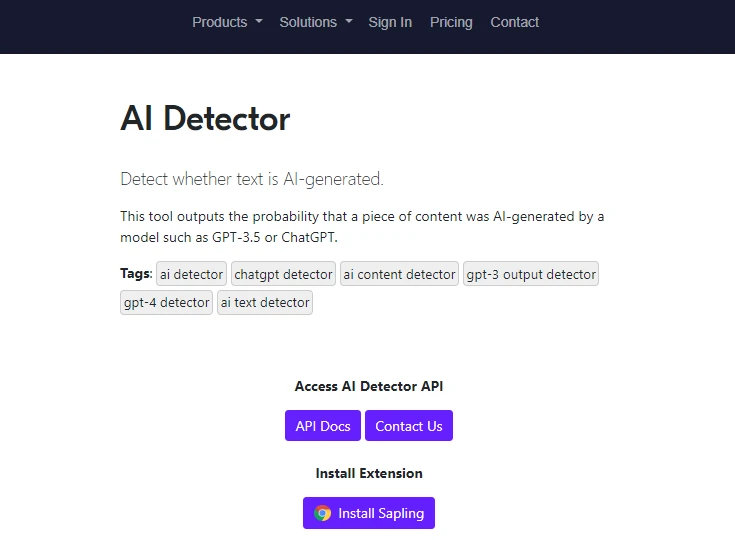
Sapling ai text detector tool let’s you find machine-generated piece of text, it has the capacity to detect models such as GPT-3, GPT-3.5, ChatGPT, and GPT-4 AI generated or actually written by a human.
We visited the website to try the tool and it was amazing. We inputted the text into the simple and clean interface of the tool and without any further clicks the tool analysed for ai-assisted writing and the results was displayed fake on a scale of 0 to 100 percent.
The higher the percentage showing in front of fake, the more it means the copy was automatically generated using Ai.
The tool doesn’t just leave you with the percentage analysis, it goes further to highlight the sentences or paragraphs that may likely be AI-generated.
Sapling.ai text detector is one of the most accurate in this category, We didn’t expect any lesser owing to reasons that the tool was developed by former researchers from Google, Stanford and Berkeley University of California.
However, the developers also agreed that False positives and false negatives may sometimes be the case.
The tool is runs a freemium model, meaning, there’s a paid plan to unlock more access at ₦25 per month.
11. ZeroGPT
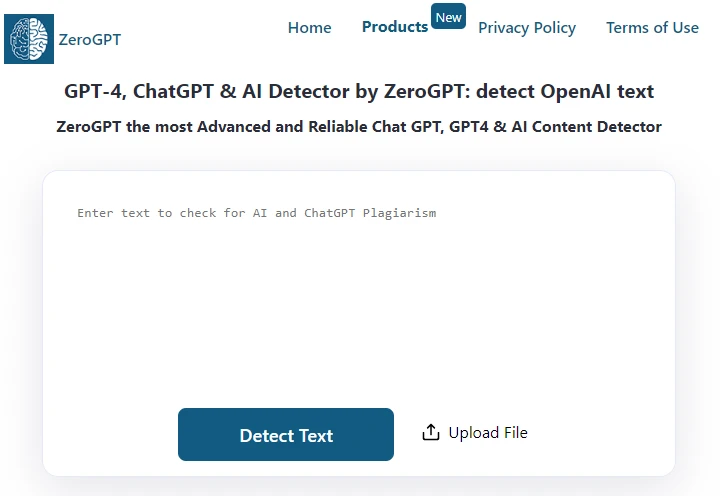
ZeroGPT is recently one of best go-to AI text detection tool. It’s very accurate and can detect most recent models of Chat GPT, GPT4.
The algorithm used to develop ZeroGPT is complex and deep and it can even detect text written with Google’s Bard AI.
It prides itself to have analysed over 10 million articles since inception.
To use the tool, you can use the text box interface by just copying and pasting the text then click on the blue detect text button, you can also upload the text file.
It has a robust APIs solution for those who may want to Integrate it into their apps. The tool is currently free to use and the accuracy for me is about 95%.
It highlights in yellow the sentence that may likely be AI-generated making it easy for you to quickly and easily manipulate the text for un-detection.
In conclusion
Google’s Webmasters Trend Analyst, John Mueller disclosed that AI-generated content are considered spam and violates the company’s policy and could attract a manual penalty.
Websites using Ai for their content creation may have their web pages gradually deranked or deindexed from Google or suffer much severe penalities from the search engine.
Google has hinted that it has the a much powerful and complex algorithm to detect AI-generated copies even the one done with tools such as Jasper ai.
Hence there’s a need to constantly check your contents especially if you’re working with copywriters. Some copywriters will usually maintain the narratives that the tools don’t work properly and that you can’t base your judgement on it, just to earn their pay.
But you must make your terms clear from onset and ask them to make sure their copies are not just ai proof but also thought provoking and full of unique ideas that can add value to your audience.
To a great extent many of these ai-text detection tools are free to use and they do work efficiently in detecting ai-written text or copies.
So, do yourself some good to check your content for not just plagiarism but also for automated machine-written copies using Artificial intelligence tools.


